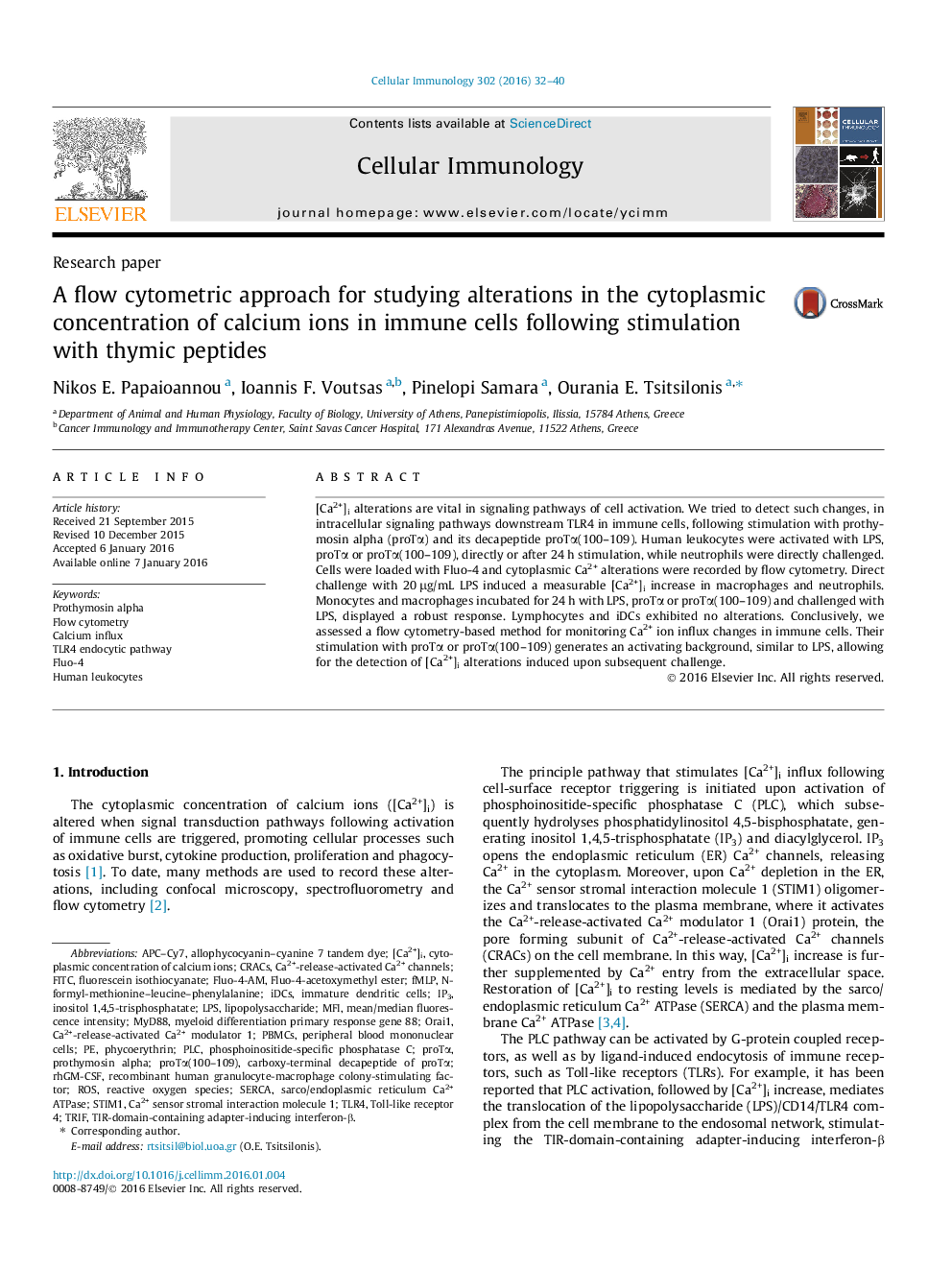| Article ID | Journal | Published Year | Pages | File Type |
|---|---|---|---|---|
| 2166897 | Cellular Immunology | 2016 | 9 Pages |
•We assessed [Ca2+]i changes upon immune cell stimulation with TLR4 agonists by flow cytometry.•Direct challenge of neutrophils and macrophages with LPS resulted in [Ca2+]i increase.•Macrophages/monocytes stimulated with low LPS or proTα/proTα(100–109) and challenged with LPS showed high [Ca2+]i.•Similarly treated lymphocytes and iDCs did not show any [Ca2+]i changes.•Comparable [Ca2+]i levels are induced in proTα/proTα(100–109) or LPS stimulated leukocytes.
[Ca2+]i alterations are vital in signaling pathways of cell activation. We tried to detect such changes, in intracellular signaling pathways downstream TLR4 in immune cells, following stimulation with prothymosin alpha (proTα) and its decapeptide proTα(100–109). Human leukocytes were activated with LPS, proTα or proTα(100–109), directly or after 24 h stimulation, while neutrophils were directly challenged. Cells were loaded with Fluo-4 and cytoplasmic Ca2+ alterations were recorded by flow cytometry. Direct challenge with 20 μg/mL LPS induced a measurable [Ca2+]i increase in macrophages and neutrophils. Monocytes and macrophages incubated for 24 h with LPS, proTα or proTα(100–109) and challenged with LPS, displayed a robust response. Lymphocytes and iDCs exhibited no alterations. Conclusively, we assessed a flow cytometry-based method for monitoring Ca2+ ion influx changes in immune cells. Their stimulation with proTα or proTα(100–109) generates an activating background, similar to LPS, allowing for the detection of [Ca2+]i alterations induced upon subsequent challenge.
Graphical abstractFigure optionsDownload full-size imageDownload as PowerPoint slide
